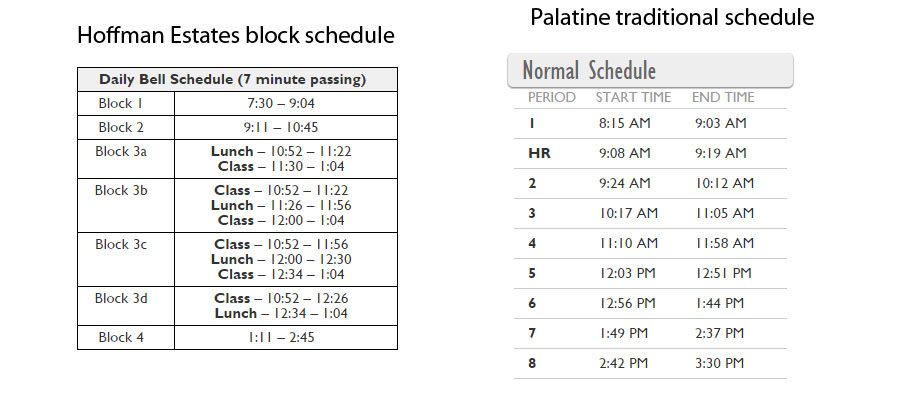Editorial: The drawbacks of a block schedule
April 4, 2017
In recent years, Hoffman Estates High School has implemented a college-based block schedule, where students would take four 90-minute classes and have a 40-minute lunch period daily.
By alternating between two “sets” of four courses every day, students end up taking eight classes per semester just like they would with a traditional eight-period schedule.
Hoffman Estates has higher truancy rates in comparison to other Palatine-based High School District 211 schools; administrators hope the block schedule would reduce absences, discipline problems and dropout rates.
According to a Chicago Tribune article, Hoffman’s switch to the block schedule means classes will last longer, which “reduce[s] loitering and result[s] in fewer intervals between classes…make[ing] it easier for administrators to track students’ whereabouts, and that can mean less truancy and fewer dropouts.”
Administrators say that, for good students, having longer classes allows for more intense lessons. Meanwhile, there is more time for tutoring for average and below-average students.
16-year-old Hoffman High school student Ross Marshall claimed that the block schedule could be advantageous, considering that it provides more time for science labs and book discussions.
However, a concern of his was having band every other day, which in some cases meant that there wouldn’t be any rehearsal(s) on the day of a concert.
There is also the argument that high school students have difficulty remaining focused for a 90-minute period, and that certain subjects like math or foreign language require daily practice.
Meanwhile, the block schedule would make classes more difficult—alternating days means that more content will have to be covered in each class, while elective courses might not be able to effectively use all of the time provided.
Not only does a block schedule yield potential academic drawbacks, but it also proved difficult to implement without problems.
Hoffman administrators had to obtain a waiver from state code so students wouldn’t have to partake in daily P.E. courses, and schedulers found that two lunch periods would have to overlap. For 5 minutes, there’d be too many students in the cafeteria.
Ultimately, we believe that a traditional eight-period schedule is more intellectually productive than a block schedule.
A block schedule may prove overwhelming for students that take rigorous courses, while those who take electives may feel that all of their time isn’t being spent efficiently.








